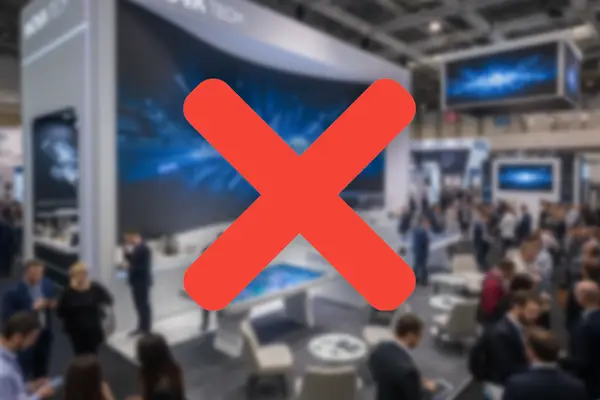We're in a wondrous age for marketing, where you can drill down into your customer's needs and deliver a targeted message directly to the hand-held device that a person stares at for 60 percent of his or her day. However, if that person goes in search of your store and can't find it because of an ineffective sign – what's the point? Today, we're going to talk about the importance of creating impactful signage.
In this day and age of high-tech wonders, it's often easy to forget that sometimes the most powerful advertising is the good, ol' fashioned sign (of course, the good, ol' fashioned sign can be a high-tech wonder itself, but I don't want to get sidetracked).
[adguru adid="4635"]
9 Tips for Creating Impactful Signage
Let's take a look at a few tips for designing an effective sign that will clearly convey your message and attract the attention of passersby.
Make sure it is visible
It seems obvious, but a sign is no good if people can't see it. This goes beyond simply making sure that nothing is obstructing its view. It is also about ensuring that your sign is the right size for the distance from which you expect people to see it. For example, if you want motorists to see your sign, it must be viewed clearly through a windshield to let the message get through.
Legibility is key
The larger the font size, the easier your text will be to read - up to a point. It is possible for text to get too big – think of it like sitting on the front row of a movie theater.

Try to keep the intended size of the sign in mind. When you are designing something on a (relatively) small computer screen, it may look perfect. However, when it is blown up to actual size, that once perfectly legible font is now the size of a half dollar and nearly invisible.
The general rule is that every inch of letter size is worth 10 feet of viewing distance. So, lettering that is five inches tall is best viewed from fifty feet away, while font printed at 15 inches should be viewed from 150 feet away.
Choose an appropriate font
The font you choose can also impact legibility. You can have the perfect size, but it will be difficult to read if it's a font where the P's look like Q's or the letters smushes illegibly into one another. You may feel that a fancy font will help to convey your marketing message, but it's no good if people can't read it.
You want to choose fonts that are crisp and clear from multiple distances. A general rule is to not utilize more than two fonts in a single piece, and you want to ensure that the fonts complement each other.
Also, use sentence case or at least only start words with uppercase lettering, then use lowercase. Studies have found that using all caps makes a sign harder to read.
Keep it simple
Typically, a sign is designed to convey a message to a pedestrian on foot or in a vehicle. These folks do not have much time to decode a complex message (if you're creating in-store signage, you have the luxury to be a little more verbose … just a little).
Try to keep your point to as few words as possible. Cramming too many words on the sign will make it difficult to read – and most people won't even bother to try.
[adguru adid="4635"]
Utilize white space
This point goes hand-in-hand with keeping it simple. It can be tempting to fill every nook and cranny of a sign with pictures and information.
DON'T.
Let your sign breathe. The empty space of a sign is just as important as the other elements. If you have too much on your sign, you will overwhelm the audience; again, they won't bother. However, if you leave some white space (this doesn't have to actually be "white," just free of text and images), your message will pop up and be much clearer to a reader. It is recommended that 30 to 40 percent of your sign be white space.
Carefully select your colors
Trendy colors, like Pantone's Flavors of the Month, are great for temporary signage and advertisements. However, it is better to choose from time-tested colors for permanent signs intended to be long lasting. Remember that today's trendy color will soon become tomorrow's eyesore.

2019 PAX East - MTG Arena
Be especially careful when selecting your color combinations, as well. The background color you choose can significantly impact the legibility and readability of your sign. Be sure to select a color that does not overpower the color of your font. For example, if you select a black backdrop and then choose dark blue for your font, the letters will likely fade into the background and be nearly impossible to see, much less read. The greater the contrast between colors, the easier it is to see, read, and understand the message.
Fortunately, the Outdoor Advertising Association of America (OAAA) has done some of this work for you. The OAAA has identified 14 color combinations for backgrounds and lettering that are among the most visible. The association has ranked them 1-14, with #1 being the most legible and #14 as the least legible.
- Black on Yellow
- Black on White
- Yellow on Black
- White on Black
- Blue on White
- White on Blue
- Blue on Yellow
- Yellow on Blue
- Red on White
- White on Red
- Red on Yellow
- Yellow on Red
- Yellow on Purple
- White on Green
When selecting colors for outdoor signs, know that many of these combinations, such as the white and yellow combinations, contrast remarkably well with outside elements, like green leaves and the blue sky.
Select images that complement your design
Full-color images, logos, and other graphic elements can all enhance a sign – or they can be a distraction or an overpowering influence that ruins it.
Like selecting a color and leaving white space, a careful and considered use of images will result in an effective and impactful design.
[adguru adid="4635"]
Make sure your creation ties to your brand
Ironically, you can do all the above correctly and still strike out with your sign if you don't tie it into your brand image. It is essential that anyone who is familiar with your brand can look at your sign and make the connection.
Think about the big-name brands you know. What is it about their signage that makes them instantly recognizable? The logo? The colors? The font? Some or all of the above?
How can you take those brands as examples for ensuring your brand is connected to your new signage?
Finally, make sure your sign stands out
At the end of the day, if your sign is bland and unmemorable or unnoticeable, it is a failure. There needs to be something about your sign that grabs people's attention, an element in the design that helps it rise above the rest.
What is it that your brand has that others do not? Find that something and promote it.
When a sign's components come together successfully – size, text, design, location, etc. – it can help build your brand image and attract customers to your location. For help designing and constructing the perfect sign for your brand, call The Trade Group at (800) 343-2005.








